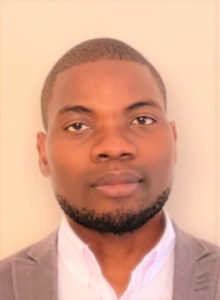Strain/Counterstrain (Passive positional release)
Chimwemwe Masina
Date: 06/05/2021
Introduction and Definition
It is an effective gentle manual therapy technique that uses passive body positioning of spasmodic (hypertonic) muscle and dysfunctional joints towards a position of comfort or tissue ease that compress or shorten the offending muscle. The movement is away from a painful and restricted direction of motion. Shortening the muscle relaxes aberrant reflexes that produce the muscle spasm. This results into immediate reduction of muscle tone to normal levels. The joint is now allowed to function properly, , improving range of motion as well as easing muscle and joint pain. Apart from focusin on joints and muscles, strain-counterstrain also looks at the lymphatic system, nerves, fascia and even blood vessels.
The goal of strain-counterstrain is to alleviate tightness in the muscle, joint and connective tissue. For orthopaedic patients, specific treatment positions are held about 90 seconds. For neurological patients, the specific treatments are held for up to 3 minutes. It is important to perform this technique before exercising the affected part.
Indications
- Torticollis
- Osteoporosis
- Stress fractures
- Pregancy and pain patients
- Post-operative pain
What Strain-Counterstrain can do
Strain-counterstrain does different things to different organs:
- Restores clogged up pump mechanism
- Allows fascia to stretch and move freely
- Relieving muscle and connective tissue tightness
- Pregancy and pain patients
- Post-operative pain
In the lymphatic system
- Restores clogged up pump mechanism
- Osteoporosis
- Stress fractures
- Pregancy and pain patients
- Post-operative pain
Fascia
Fascia is part of the muscles, tendons, ligaments, blood vessels and the nervous system. It covers all organs as well as attaching some of them to the abdominal wall. Pain results if the fascia can no longer stretch properly. This may also result in organ dysfunction. Things such as surgery, inflammation and quick movements such as a fall or car accident may result in fascial tightness.
If tight, fascia pain resemble back, hip or shoulder pain unresponsive to traditional treatment (massage and exercise).
- Allows the fascia to stretch and move normally
- Osteoporosis
- Stress fractures
- Pregancy and pain patients
- Post-operative pain
Circulatory system
Injuries to the smooth muscles of the blood vessels may result in tightening of the blood vessels. This may also result in muscle tightness in the muscles surrounding the area. This may end up causing pain and muscle weakness. The gentle glide during strain-counterstrain takes away tightness and restores strengthe immediately. This also reults immediate reduction of pain.- Allows the fascia to stretch and move normally
- Osteoporosis
- Stress fractures
- Pregancy and pain patients
- Post-operative pain
Nervous system
Tight fascia in the nervous system may result in conditions such as:- Shoulder impingement
- Carpal tunnel
- Trigeminal neuralgia
- Balance issues
- Muscular weakness
- Spinal pain
- Nausea
- Digestive dysfunction
- Headaches
- Frozen shoulder and many other conditions
Lymphatic system
Strain-counterstrain reduces pain in the lymphatic system (a filtration system). Narrowing of the vessel diameter because of inflammation of the lymphatic system would result in the lymphatic pump becoming less effective. Fluid stays in the vessel while the inflammatory chemicals stay in the tissues. Signs and symptoms of lymphatic dysfunction include:- Muscle pain
- Long term tendonitis
- Inflammed sinuses
- Ringing in the ears
- Migrane headaches
- Fibromyalgia
- Lyme’s disease
- Chronic fatigue syndrome
- Surgeries
- Injuries/accidents
Immediate pain and tension relief is reported after this treatment. If this done due to hip bursitis, it drains the bursa of swelling which immediately improves ROM of the hip and enables the client to lie on that side.
Lymphatic counterstrain helps treat visceral dysfunction that is highly resistant to manipulation, massage, exercise and medications.
Counterstrain Fascia
Surgery, inflammation (such as bronchitis or digestive issues), falls and sports accident may result in fascia tightness. Stress may also result in fascial tightness. Contracted fascia may stimulate muscle spindles and cause long term muscular pain. Back, hip, neck or shoulder pain not responsive to traditional physiotherapy, medication and exercise may be likely caused by contracted fascia. This technique is performed by physiotherapists with detailed understanding of visceral anatomy.
Strain-counterstrain and nerve dysfunction
Visceral fascia is innervated by the same nerves that innervate organs. Therefore, if irritation of these nerves can cause minor organ complaints such as urinary urgency, chronic constipation or unknown abdominal pain, back, neck and shoulder pain. Visceral Counterstrain is only recommended for organ complaints that have first been thoroughly evaluated by your doctor
Dural/cranial strain-counterstrain
Musculoskeletal pain caused by chronic contraction
Cranial tender points and their significance
Alleviating cranial tender points by strain-counterstrain
Relationship between MTrPs and joint dysfunction
Treatment

Chimwemwe is a physiotherapist with experience in Malawi, Botswana and New Zealand. He currently holds professional registration with Australian Health Practitioner Regulation Agency (AHPRA), Botswana Health Professions Council (BHPC) and the Physiotherapy Board of New Zealand (PBNZ). Currently he is a practicing physiotherapist in New Zealand.
Disclaimer
Information on this page is for educational purposes only, for specific medical advice please consult a licenced healthcare professional.
